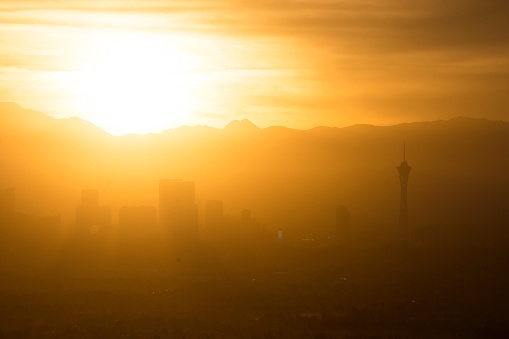Planet Earth — and every living thing on it — is suffering from the heat. And the numbers prove it.
Since the first Earth Day in 1970, the organization Climate Central (climatecentral.org) reports, the concentration of carbon dioxide in Earth’s atmosphere has increased by more than twice as much as it did in the previous half century.
As a result, ”There is now more CO2 in the atmosphere than at any point in at least the last two million years,” says the group, which describes itself as “an independent organization of leading scientists and journalists” tracking climate change and its impact.
And because of all that extra greenhouse gas, the group says, Americans “are experiencing warming — but it’s not happening at the same rate in each place.”
So, as environmentalists prepare for the 49th annual Earth Day next Monday, Climate Central looked at temperature trends in 242 cities and 49 states from 1970 to 2018, and issued a report Wednesday, ranking those that are warming most rapidly. (Of the 242 cities, only six have gotten cooler or seen no change.)
The top three fastest-warming cities from 1970 to 2018 are all in the Southwest: Las Vegas NV (+5.76º F.); El Paso TX (+4.74º), and Tucson AZ (+4.48º), with Phoenix right behind (+4.35º).
Turning to the states, the report says temperatures have risen “at least 1.8º F. in all states measured,” with Alaska and the Southwest leading the way.
The top three fastest-warming states are Alaska (+4.22º F.); New Mexico (+3.32º), and Arizona (+3.23º).
The report also notes that there is variation in warming trends across seasons as as well as regions.
“In most of the United States — including all of the Northeastern, Southeastern, and Midwestern states — winter is the fastest-warming season,” it says.
“Warming matters,” the report says, “because it drives most of the hazards associated with climate change. Higher average temperatures can boost evaporation, making dry areas drier and making wet places wetter, and in turn encouraging droughts and heavy downpours.”
Warming also “boosts sea levels, increases the height of storm surges, and worsens the downpours accompanying some hurricanes, such as 2017’s Hurricane Harvey,” and it is “damaging public health, not just by contributing to dangerous heat waves and expanding the seasonal range of disease-carrying pests such as mosquitoes, but also by exacerbating ground-level ozone pollution.”
